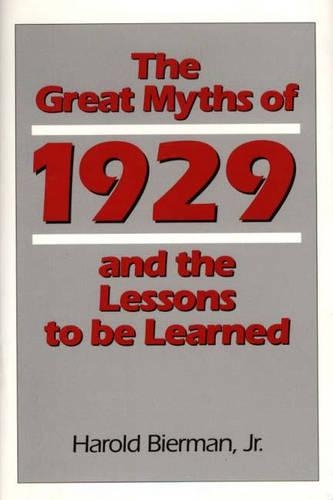
The Great Myths of 1929 and the Lessons to Be Learned
(Hardback)
Publishing Details
The Great Myths of 1929 and the Lessons to Be Learned
By (Author) Harold Bierman
Bloomsbury Publishing PLC
Praeger Publishers Inc
30th March 1991
United States
Classifications
Tertiary Education
Non Fiction
Economic history
Macroeconomics
332.64273
Physical Properties
Hardback
208
Description
What actually was the economic situation in 1929 and what happened to the stock market Harold Bierman's look at the Crash of '29 provides provocative answers that challenge the "facts" and overturn previously held assumptions concerning the catastrophic events that led to ten years of economic depression and very likely created the fertile soil of despair and unrest that ultimately led to World War II. This re-evaluation takes a different track and arrives at a different set of conclusions than John Kenneth Galbraith's classic overview of the period "The Great Crash". Echoes of the great stock market price declines that ended ten years of the greatest prosperity the US had ever experienced have continued to reverberate down the corridors of history. Bierman believes that a more complete understanding of these past events can enhance current market decisions; that by accurately assessing the stock market crash of 1929-1932, readers can better grasp the present market situation and more wisely forecast the future.
Reviews
It provides an excellent example of how to analyze events in the context of the information that was available to people at the time . . . students of financial economics deserve better, and Harold Bierman has delivered it.-The Journal of Finance
"It provides an excellent example of how to analyze events in the context of the information that was available to people at the time . . . students of financial economics deserve better, and Harold Bierman has delivered it."-The Journal of Finance
Author Bio
HAROLD BIERMAN, JR. is the Nicholas H. Noyes Professor of Business Administration, Johnson Graduate School of Management, Cornell University. A prolific writer, he has published 19 books since 1959, among them: Managerial Accounting, An Introduction, Topics in Cost Accounting and Decisions, Strategic Financial Planning and The Capital Budgeting Decision (with Seymour Smidt).
